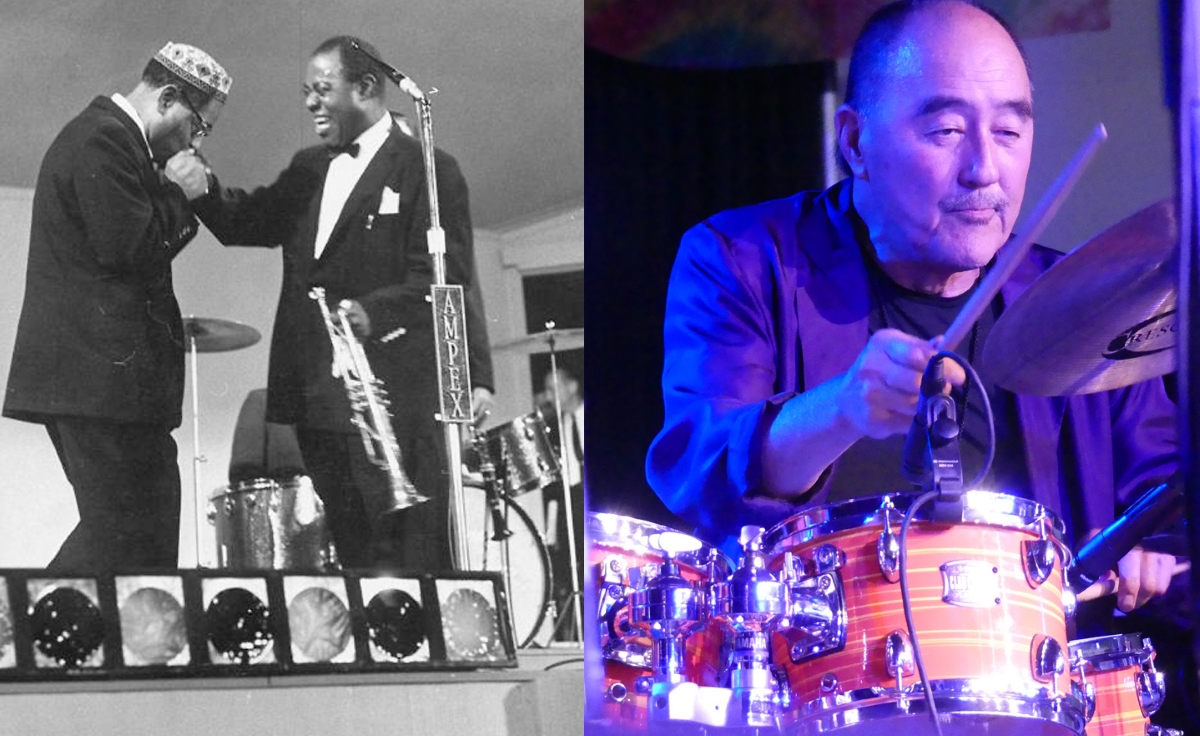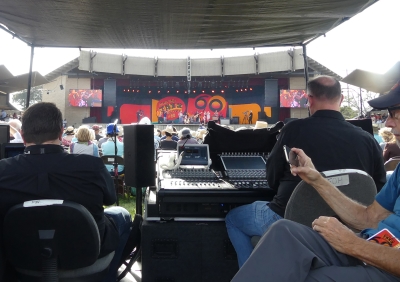
Or take a look at just one of the Meyer Sound MILO line array enclosures at the 60th-anniversary festival, with an internal 4-channel amplifier providing three channels of 1,125 watts and the fourth with 560 watts (rated at “burst power”). So the nominal power for the entire 1958 system was about the same as the wattage delivered to one current HF driver!
There’s no mention in the 1958 article about where the mix position was situated, and I could not spot it within any of the historic photos. However, the article does state that a crew member “equipped with a field telephone, served as a listener.” He was seated toward the back of the audience area to judge the balance and “phone in for more piano or what not.” I’m assuming that the three mixers were within close proximity of each other so that adjustments could be made quickly.
Further, the present main system serving the same space includes flown MILO line arrays (eight modules per side) joined by Meyer Sound M3B subwoofers and an assortment of front, side and out fill loudspeakers. Combined, the power amplifiers deliver tens of thousands of watts, and the sound is excellent throughout the arena.
One key difference between then and now is that the stated goal by Tinkham and his associates was to have the sound system be completely unnoticed so that for the more distant seats the sound level would emulate what was being heard acoustically in the close seats. No front fills were used to enhance the level for nearby listeners, and the performers were also blending acoustically, without monitors.

As stated in the article, “The naturalness of the sound was due to two factors – a uniform frequency response from the speakers, and running them at a reasonable level.”
The Right Blend
I’ll close with a couple of stories.
Dizzie Gillespie, who was a main act at the first festival and who was celebrated on the Arena Stage this year at the 100th anniversary of his birth, didn’t catch the idea of the stereo miking setup. He moved the stage mics “every which way, thus intermixing the three channels.”
When the engineer put them back in place after the first tune, Dizzy moved them again before the second tune, and the sound reproduction suffered. To solve the problem, the stage mics were attenuated and only the overheads used, resulting in the performance “sounding terrific.”
When my wife and I are in town for the festival, we visit with a long-time local musician named Jackson Stock at the house where he grew up, a few blocks from the fairgrounds. He’s told us that his parents played on the opening night of that first festival as the Dixieland band Jake Stock and the Abalone Stompers, with Jake on clarinet and his wife on piano.
When the electricity went down mid-show, Dizzie went over to Grace Stock and urged her to keep playing until the lights came back on.
As a final note, on the first day of the 60th Monterey Jazz Festival we heard a great band called Along Came Betty at the Garden Stage. The trumpeter was introduced as Brian Stock, and checking with Jackson later that evening, he confirmed that he was indeed family – his cousin. So though 60 years have passed, the festival is still going strong while forging a blend of the new with the traditional.

